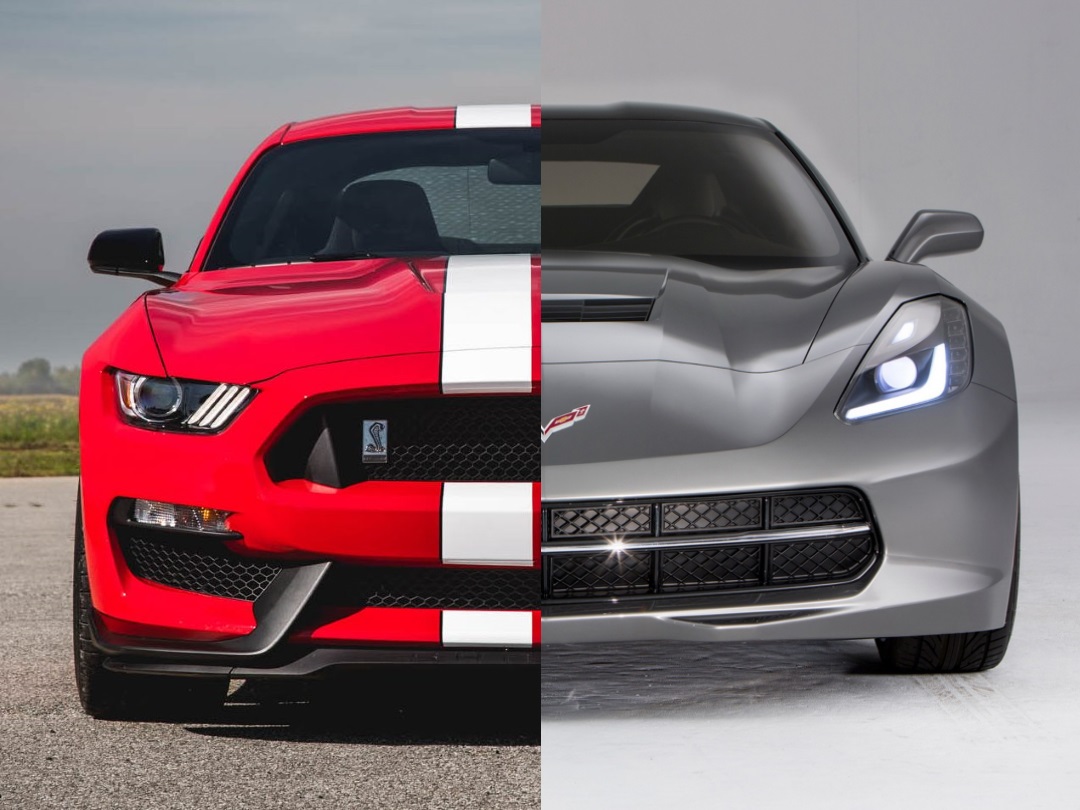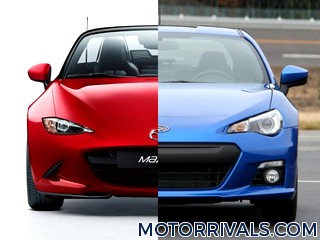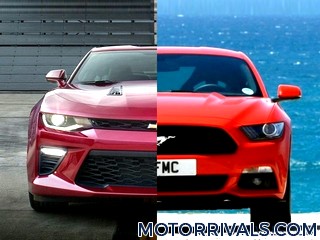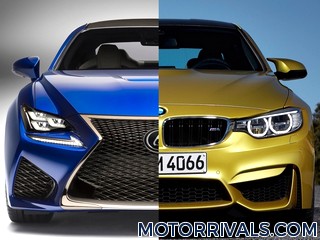2016 BMW M2 vs 2016 BMW M4
BMW M2 Press Release Highlights
A compact high-performance BMW sports car was already causing heads to
turn and hearts to flutter over 40 years ago. Indeed, the BMW 2002 turbo
perfectly encapsulated BMW’s resolution to deliver outstanding dynamics,
exceptional agility and optimum car control. As if to demonstrate in
similarly resounding style that this commitment is alive and well, BMW M
GmbH can now unveil the new BMW M2. With its high-performance
six-cylinder in-line engine, rear-wheel-drive agility, lightweight
aluminium M Sport suspension and extrovert styling, the new BMW M2 Coupe
has all the ingredients to deliver the last word in driving pleasure.
Characteristic M design.
A single glance is all it takes to pick the new BMW M2 Coupe out as a member of the BMW M family, with its styling also keen to advertise its dynamic attributes. Inspired by models from the history of BMW in motor racing, the new M2 Coupe makes no secret of its extraordinary performance potential. The low front apron with large air intakes, muscular flanks with characteristic M gills, 19-inch aluminium wheels in familiar M double-spoke design and low, wide rear with M-specific twin-tailpipe exhaust system all play impressive roles here. The time-honoured character of BMW M cars is also present and correct in the design of the interior. The Alcantara of the door cards and centre console together with porous carbon fibre creates an ambience of rare quality and heady sporting ambition further underlined by blue contrast stitching and M embossing on selected details. Sports seats, an M sports steering wheel and an M gearshift lever ensure BMW M2 drivers are in perfect command of their car it at all times.
Explosive performance.
The newly developed, three-litre six-cylinder in-line engine in the new BMW M2 deploys cutting-edge M TwinPower Turbo technology to develop 272 kW/370 hp at 6,500 rpm (fuel consumption combined: 8.5 l/100 km [33.2 mpg imp]; CO2 emissions combined: 199 g/km)* and, in so doing, lays down a marker in the high-performance compact sports car segment. The same applies to power delivery. Peak torque of 465 Nm (343 lb-ft) can be increased to as much as 500 Nm (369 lb-ft) in short bursts under overboost. All of which enables the new BMW M2 Coupe with optional seven-speed M Double Clutch Transmission (M DCT) and Launch Control to accelerate from 0 to 100 km/h (62 mph) in just 4.3 seconds. Top speed is electronically limited to 250 km/h (155 mph). Yet, with its M DCT transmission, fuel consumption of just 7.9 litres* per 100 km (35.8 mpg imp) and CO2 emissions of just 185 g/km*, the car is also keen to emphasise its outstanding efficiency.
Motor sport expertise.
With the lightweight aluminium front and rear axles from the BMW M3/M4 models, forged 19-inch aluminium wheels with mixed-size tyres, M Servotronic steering with two settings and suitably effective M compound brakes, the new BMW M2 Coupe has raised the bar once again in the compact high-performance sports car segment when it comes to driving dynamics. The electronically controlled Active M Differential, which optimises traction and directional stability, also plays a significant role here. And even greater driving pleasure is on the cards when the Dynamic Stability Control system’s M Dynamic Mode (MDM) is activated. MDM allows wheel slip and therefore moderate, controlled drifts on the track.
Intelligent connectivity when you want it.
The new BMW M2 Coupe comes with an extensive list of standard equipment in keeping with its performance-focused set-up. The seven-speed M Double Clutch Transmission (M DCT) with Drivelogic, available as an option, changes gears with extraordinary speed but no interruption in the flow of power. A wide selection of driver assistance systems and mobility services from BMW ConnectedDrive is also available. The ConnectedDrive Services provide the basis for extensive vehicle connectivity, and this option also enables the use of innovative apps, which are integrated seamlessly into the car using BMW ConnectedDrive technology. For example, the GoPro app allows the driver to record fast laps of the track with a dashboard-mounted action camera, using the iDrive Controller and Control Display. Meanwhile, the driver’s individual style at the wheel can be analysed as desired with the M Laptimer app. Information on speeds and braking points can be shared easily via e-mail or Facebook.
Characteristic M design.
A single glance is all it takes to pick the new BMW M2 Coupe out as a member of the BMW M family, with its styling also keen to advertise its dynamic attributes. Inspired by models from the history of BMW in motor racing, the new M2 Coupe makes no secret of its extraordinary performance potential. The low front apron with large air intakes, muscular flanks with characteristic M gills, 19-inch aluminium wheels in familiar M double-spoke design and low, wide rear with M-specific twin-tailpipe exhaust system all play impressive roles here. The time-honoured character of BMW M cars is also present and correct in the design of the interior. The Alcantara of the door cards and centre console together with porous carbon fibre creates an ambience of rare quality and heady sporting ambition further underlined by blue contrast stitching and M embossing on selected details. Sports seats, an M sports steering wheel and an M gearshift lever ensure BMW M2 drivers are in perfect command of their car it at all times.
Explosive performance.
The newly developed, three-litre six-cylinder in-line engine in the new BMW M2 deploys cutting-edge M TwinPower Turbo technology to develop 272 kW/370 hp at 6,500 rpm (fuel consumption combined: 8.5 l/100 km [33.2 mpg imp]; CO2 emissions combined: 199 g/km)* and, in so doing, lays down a marker in the high-performance compact sports car segment. The same applies to power delivery. Peak torque of 465 Nm (343 lb-ft) can be increased to as much as 500 Nm (369 lb-ft) in short bursts under overboost. All of which enables the new BMW M2 Coupe with optional seven-speed M Double Clutch Transmission (M DCT) and Launch Control to accelerate from 0 to 100 km/h (62 mph) in just 4.3 seconds. Top speed is electronically limited to 250 km/h (155 mph). Yet, with its M DCT transmission, fuel consumption of just 7.9 litres* per 100 km (35.8 mpg imp) and CO2 emissions of just 185 g/km*, the car is also keen to emphasise its outstanding efficiency.
Motor sport expertise.
With the lightweight aluminium front and rear axles from the BMW M3/M4 models, forged 19-inch aluminium wheels with mixed-size tyres, M Servotronic steering with two settings and suitably effective M compound brakes, the new BMW M2 Coupe has raised the bar once again in the compact high-performance sports car segment when it comes to driving dynamics. The electronically controlled Active M Differential, which optimises traction and directional stability, also plays a significant role here. And even greater driving pleasure is on the cards when the Dynamic Stability Control system’s M Dynamic Mode (MDM) is activated. MDM allows wheel slip and therefore moderate, controlled drifts on the track.
Intelligent connectivity when you want it.
The new BMW M2 Coupe comes with an extensive list of standard equipment in keeping with its performance-focused set-up. The seven-speed M Double Clutch Transmission (M DCT) with Drivelogic, available as an option, changes gears with extraordinary speed but no interruption in the flow of power. A wide selection of driver assistance systems and mobility services from BMW ConnectedDrive is also available. The ConnectedDrive Services provide the basis for extensive vehicle connectivity, and this option also enables the use of innovative apps, which are integrated seamlessly into the car using BMW ConnectedDrive technology. For example, the GoPro app allows the driver to record fast laps of the track with a dashboard-mounted action camera, using the iDrive Controller and Control Display. Meanwhile, the driver’s individual style at the wheel can be analysed as desired with the M Laptimer app. Information on speeds and braking points can be shared easily via e-mail or Facebook.
BMW M4 Press Release Highlights
The launch of the new BMW M3 Sedan and new BMW M4 Coupe sees BMW M GmbH
revealing a new interpretation of the high-performance sports car – and
carrying the BMW M philosophy over into the fifth generation of the M3.
More than 40,000 examples of the fourth-generation BMW M3 Coupe were
built, and now the BMW M4 Coupe is poised to continue this success
story. The “M4” badge is a reference to the model series that provides
the basis for the new M model – and, for the first time, the Coupe will
be introduced at the same time as the four-door variant. Logic dictates
the latter will be christened the BMW M3 Sedan.
“Four generations of the BMW M3 have blended motor sport genes and uncompromised everyday usability within an emotionally rich overall concept,” explains Dr Friedrich Nitschke, President BMW M GmbH. “The BMW M3 Sedan and BMW M4 Coupe represent an ongoing commitment to this philosophy. The engine is the heart of every M model, and the new turbocharged six-cylinder unit fitted in the two new cars combines the virtues of a high-revving naturally aspirated unit with the strengths of turbocharger technology. A committed lightweight design concept produces a weight saving of around 80 kilograms over the outgoing M3. The BMW M3 and BMW M4 take motor sport technology from the track to the road, and thousands of laps of the legendary Nürburgring Nordschleife – the world’s most exacting race track – have readied the new models for that transition. Meticulous and passion-fuelled development work has underpinned the creation of two high-performance sports cars that set new standards in terms of overall concept, precision and agility.”
The high-revving six-cylinder in-line engine with M TwinPower Turbo technology newly developed for the new BMW M3 Sedan and new BMW M4 Coupe produces a maximum output of 431 hp. Its peak torque of 550 Newton metres (406 lb-ft) is available across a wide rev band and outstrips the figure recorded by the outgoing BMW M3 by roughly 40 per cent. And yet the engine also achieves a reduction in fuel consumption and emissions of around 25 per cent. Both the BMW M3 Sedan and BMW M4 Coupe cover the sprint from 0 to 100 km/h / 62 mph in 4.1 seconds (with the optional seven-speed M Double Clutch Transmission).
In the interests of maximising dynamic ability and ensuring excellent efficiency, weight savings of around 80 kilograms have been achieved over a comparably equipped predecessor model. The BMW M4 Coupe, for example, has a DIN kerb weight of 1,497 kilograms, thanks to the rigorous application of intelligent lightweight design measures. These include the increased use of lightweight materials such as carbon-fibre-reinforced plastic (CFRP) and aluminium for a number of chassis and body components. Indeed, both models feature a carbon roof.
One of the primary objectives in the development of the BMW M3 Sedan and BMW M4 Coupe was to ensure the new cars offered impressive race track capability. Hence the presence of a track-specification cooling system, which ensures that the optimum temperature balance for the engine, turbochargers and transmission is maintained at all times.
In order to accentuate the racing character of the two models in terms of both their technical composition and the fine-tuning of the cars, the engineers worked closely with BMW Motorsport’s professional racing drivers during the development phase. For example, DTM drivers Bruno Spengler and Timo Glock took part in the extensive testing and set-up work carried out at the Nürburgring-Nordschleife circuit.
“Four generations of the BMW M3 have blended motor sport genes and uncompromised everyday usability within an emotionally rich overall concept,” explains Dr Friedrich Nitschke, President BMW M GmbH. “The BMW M3 Sedan and BMW M4 Coupe represent an ongoing commitment to this philosophy. The engine is the heart of every M model, and the new turbocharged six-cylinder unit fitted in the two new cars combines the virtues of a high-revving naturally aspirated unit with the strengths of turbocharger technology. A committed lightweight design concept produces a weight saving of around 80 kilograms over the outgoing M3. The BMW M3 and BMW M4 take motor sport technology from the track to the road, and thousands of laps of the legendary Nürburgring Nordschleife – the world’s most exacting race track – have readied the new models for that transition. Meticulous and passion-fuelled development work has underpinned the creation of two high-performance sports cars that set new standards in terms of overall concept, precision and agility.”
The high-revving six-cylinder in-line engine with M TwinPower Turbo technology newly developed for the new BMW M3 Sedan and new BMW M4 Coupe produces a maximum output of 431 hp. Its peak torque of 550 Newton metres (406 lb-ft) is available across a wide rev band and outstrips the figure recorded by the outgoing BMW M3 by roughly 40 per cent. And yet the engine also achieves a reduction in fuel consumption and emissions of around 25 per cent. Both the BMW M3 Sedan and BMW M4 Coupe cover the sprint from 0 to 100 km/h / 62 mph in 4.1 seconds (with the optional seven-speed M Double Clutch Transmission).
In the interests of maximising dynamic ability and ensuring excellent efficiency, weight savings of around 80 kilograms have been achieved over a comparably equipped predecessor model. The BMW M4 Coupe, for example, has a DIN kerb weight of 1,497 kilograms, thanks to the rigorous application of intelligent lightweight design measures. These include the increased use of lightweight materials such as carbon-fibre-reinforced plastic (CFRP) and aluminium for a number of chassis and body components. Indeed, both models feature a carbon roof.
One of the primary objectives in the development of the BMW M3 Sedan and BMW M4 Coupe was to ensure the new cars offered impressive race track capability. Hence the presence of a track-specification cooling system, which ensures that the optimum temperature balance for the engine, turbochargers and transmission is maintained at all times.
In order to accentuate the racing character of the two models in terms of both their technical composition and the fine-tuning of the cars, the engineers worked closely with BMW Motorsport’s professional racing drivers during the development phase. For example, DTM drivers Bruno Spengler and Timo Glock took part in the extensive testing and set-up work carried out at the Nürburgring-Nordschleife circuit.






















